Masterpiece Story: Portrait of Madeleine by Marie-Guillemine Benoist
What is the message behind Marie-Guillemine Benoist’s Portrait of Madeleine? The history and tradition behind this 1800 painting might explain...
Jimena Escoto 16 February 2025
Sympathy is a fascinating painting by Catalan artist Remedios Varo. It presents a lady with a cat in a most unusual and Surrealist situation. You will notice a small but dramatic river created by a glass of water, electric sparks, and a hidden creature with three tails. Read the story of this magical composition.
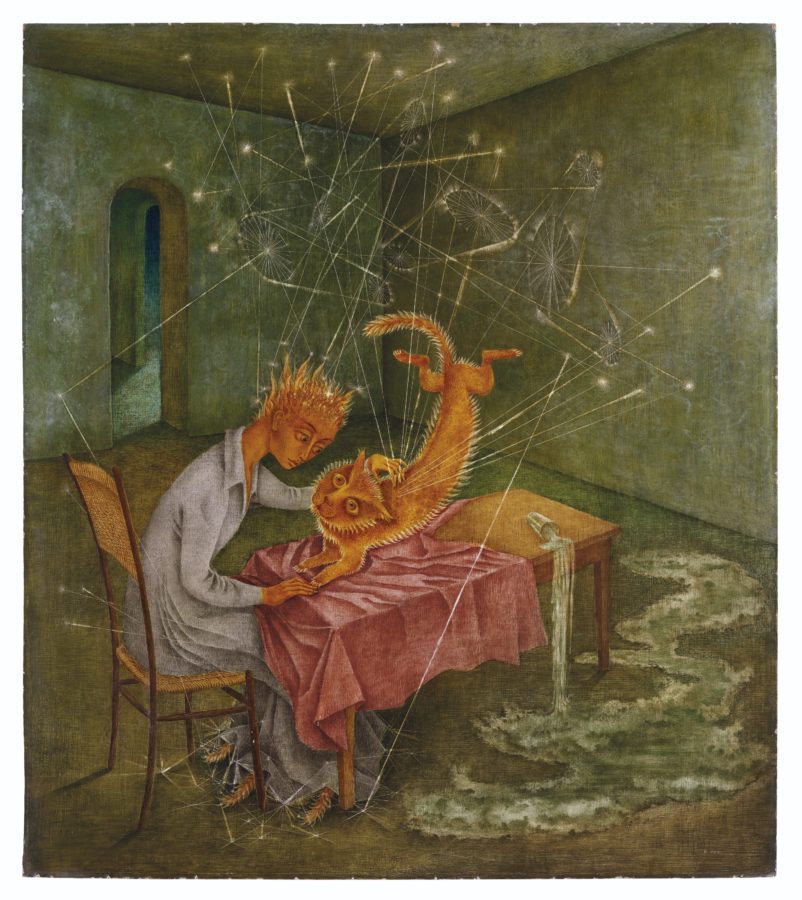
What do we have in front of us? A fairly normal domestic scene, not as fantastic or esoteric as in other works by Remedios Varo (1908-1963), and yet it captivates us with the energy that flies all over the place due to affection between the lady and her cat. We are a witness to a tender and caring, yet intense scene: a cat has just jumped on the table and tipped over a glass of water that has spilled on the floor in a somewhat dramatic puddle.
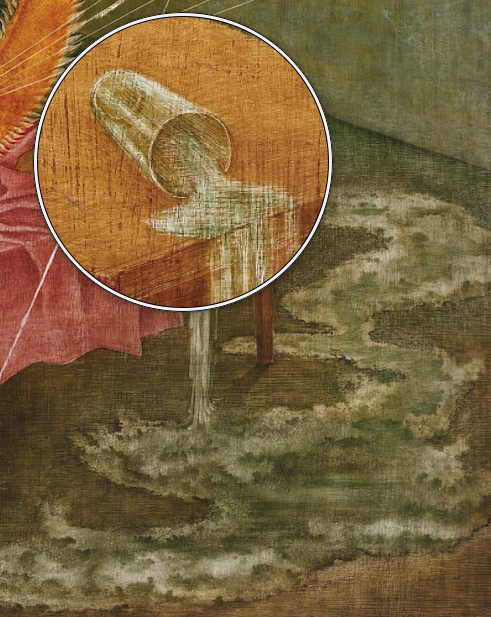
The woman shows affection and sympathy, as mentioned in the title, through acceptance and a loving caress. In turn, this gentle touch of hers produces the sparks of energy that connect her with the animal and radiates in other directions of the room.
Remedios Varo loved cats, in fact her Surrealist alter ego was a cat. So maybe what we see is a double self-portrait, as the features of the cat match those of the woman. Is it her human and animal nature that we observe? And the sparks that unite them are not from this world?
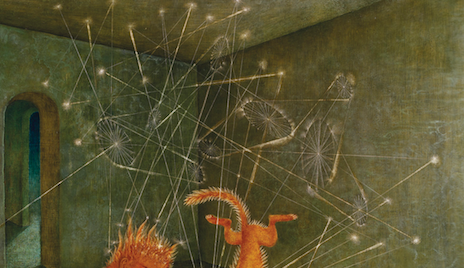
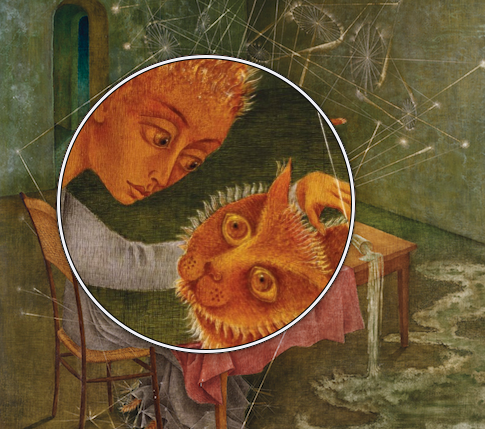
Sympathy is one of 171 paintings Varo painted in her fairly short life. It is very rare and personal. It was created in Mexico City in 1955 and presented at the group exhibition Seis pintoras (Six Painters) at the Galería Diana on one of the most prestigious avenues of Mexico City – Paseo de la Reforma 489. She also exhibited four other small-scale works. It was the beginning of a very productive period when she became a popular and highly sought-after artist. In the following years until her death in 1963, she completed over 100 works.
After more than a decade of mundane, commercial work including sewing, restoring ceramics, creating advertisements for pharmaceuticals, and making technical drawings for the Ministry of Public Health, she finally had her pace and comfort to create, provided by her partner, Austrian refugee politician Walter Gruen Berger.
Varo mostly painted on canvas and Masonite and her studio was located in Colonia Roma, Mexico City. She worked methodically, using extremely small brushes of basically a single hair, and it took her months to deliver a finished piece. The technique she often used was typical of other Surrealists, it was called decalcomania. In this method ink, paint, or another medium is spread onto a surface and, while still wet, covered with material such as paper, glass, or aluminum foil. When removed, a pattern transfers that may be further embellished. In this particular painting, we can see its result in the way the water from the cup spills onto an uncontrolled, oversized liquid surface.
It seems that it is one of not so many intimate and quiet pieces by Remedios Varo, with only a hint of Surrealism (look at the three hairy tails that show up underneath the table) and the whole spectrum of vibrant emotions. In Sympathy, Varo captures and shows us the magical realism of the meeting in our day-to-day life, not only of a woman with a cat.
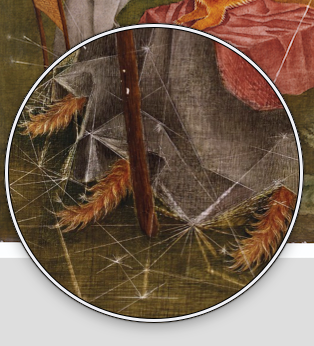

After the global enthusiasm for iconic Mexican painter Frida Kahlo, we are currently observing a new fascination with other female artists connected to Mexico, such as Remedios Varo, Leonora Carrington, Kati Horna, and Alice Rahon.
Varo’s art was featured in many international exhibitions, and she also had her own solo exhibitions in the USA, UK, France, Spain, Germany and Denmark in the past couple of years. The monographic exhibitions were organized by the National Museum of Women in the Arts in Washington DC, The Magic of Remedios Varo in 2000, in the same year Mexican Fine Arts Museum in Chicago followed with their exposition of her works. In Mexico City, the Museum of Modern Art in 2017 and 2019 held two very well-received shows: Remedios Varo. Apuntes y anécdotas de una colección and Adictos a Remedios Varo: Nuevo legado 2018 , the latter exhibition boasting 190,000 visitors during its run.
It is, however, worth mentioning that very early in her career, her pieces were shown in Paris, New York, and Tokyo (1936 Surrealist objects, Gallerie Charles Ratton, in Paris; 1936 Fantastic Art, Dada & Surrealism organized by the Museum of Modern Art in New York; 1937 Surrealisme in Tokyo). Varo’s art spoke to vast and different audiences. As they became addicted to Remedios (remedio means in Spanish medicine, solution), they discovered her version of Latin American magical realism.
Varo’s works have been acquired by museums worldwide, including The Museum of Modern Art, New York; Centre Pompidou, Paris; the National Museum of Women in the Arts, Washington D.C.; and Museo Nacional Centro de Arte Reina Sofia, Madrid, among others.
DailyArt Magazine needs your support. Every contribution, however big or small, is very valuable for our future. Thanks to it, we will be able to sustain and grow the Magazine. Thank you for your help!